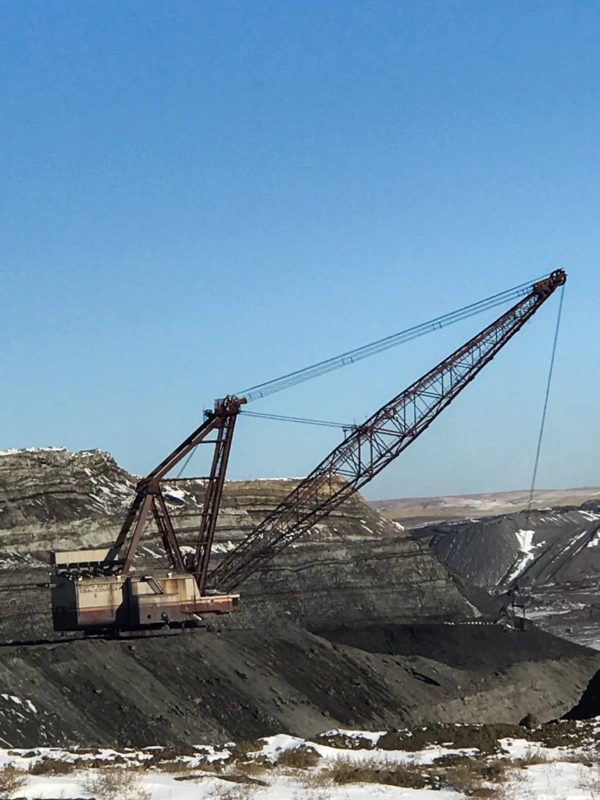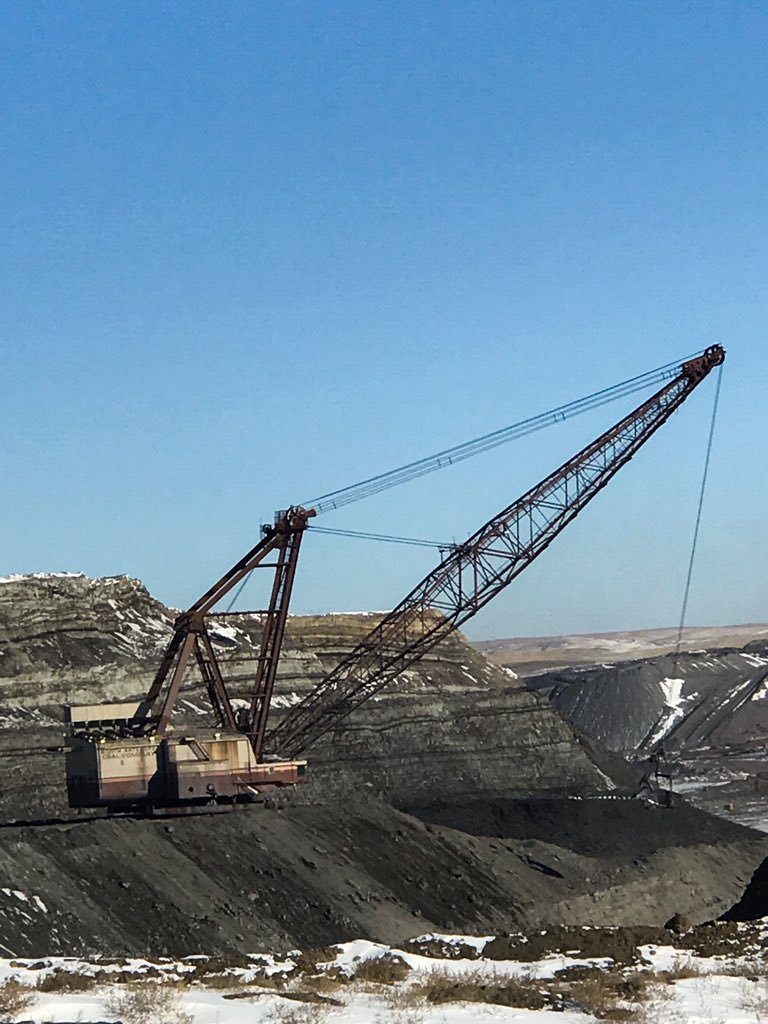Update, May 10: Cloud Peak Energy officially filed for bankruptcy today.
It’s all over but the shouting:The Wall Street Journal reports that Cloud Peak Energy, the Powder River Basin coal giant, will file for bankruptcy within the week.
A bankruptcy filing would come as little surprise, given the many warning flares the company had sent up over the last six months. Last November, after reporting dismal third-quarter results, the company launched a “strategic alternatives review”—finance-speak for a last-ditch effort to stave off insolvency. Just two months later the company switched strategic advisers, hinting their previous consultants failed to unearth any viable “strategic alternatives.”
Then, in mid-March, the company released a truly abysmal annual report, revealing massive write-downs of an existing mine and two development projects, along with major operational challenges at the company’s largest mine and an impending cash-flow crunch. At the same time, the company announced that it would skip interest payments on some of its bonds, triggering a countdown to bankruptcy. After the New York Stock Exchange decided to boot the company off the exchange, Cloud Peak played for time, hoping for a last-minute asset sale or “white-knight” investor to save the firm. Just this morning, in fact, the company secured a three-day reprieve before their creditors declare the company in default.
But the countdown to bankruptcy will likely end soon. Stockholders face a complete wipe-out. Bondholders, if they’re lucky, will see pennies on the dollar.
Cloud Peak is just the latest coal industry domino to fall. Back in 2015 and 2016, three of the nation’s four largest coal companies—Peabody Energy, Arch Coal, and Alpha Natural Resources—all filed for bankruptcy. All three companies made the same mistake of piling up massive debts to buy steel-making coal mines at the height of an international bubble. After prices inevitably fell, these debts became unsustainable, and one by one the companies sought bankruptcy protection.
Unlike those peers, Cloud Peak hewed to a more conservative strategy. The company avoided new debt and new mining projects, instead sticking to what it knew best: extracting coal from its existing mines in one of the world’s highest-volume, lowest-cost basins.
Yet in the end, Cloud Peak’s caution only bought the company a few extra years. The domestic coal market continued to sink, dragging even “healthy” coal mining firms underwater.
Three lessons stand out from Cloud Peak’s looming insolvency.
It’s not politics
First, and most importantly, the coal industry can no longer blame its demise on politics. Cloud Peak’s demise stems from bare-knuckle economics: coal-fired power just can’t compete in the market anymore. The cost of renewable energy has fallen so low that it’s often cheaper to build new wind and solar installations than to run existing coal power plants. Plus, coal faces stiff competition from cheap fracked gas. The one-two punch of renewables and fracked gas has cut into coal’s market share, while capping the price that coal companies command for their wares. At this point, the so-called “war on coal” is being waged by the marketplace itself.
Cloud Peak’s demise stems from bare-knuckle economics: coal-fired power just can’t compete in the market anymore.

No Winning Solution
Second, every coal industry strategy has now failed. Three major coal companies survived the wave of bankruptcies in 2015 and 2016, each using different tactics to weather the storm. Cloud Peak focused on the high-volume, low-cost, low-sulfur coal mines with a geographically diverse customer base. Murray Energy focused on higher-heat, higher-sulfur coal within easy transportation range of power plants with advanced scrubbers. And Westmoreland Coal doubled down on its “mine-to-plant” game plan, focusing on mines that fed nearby “captive” power plants.
All three strategies have now imploded. Westmoreland declared bankruptcy last October after utilities elected to shutter many of the plants the company serviced, leaving the company’s mines with shrinking demand and no viable alternatives. Murray Energy “restructured” its debt twice in the last year, in moves that were decried as “tantamount to default,” as demand for coal-fired power shrank in the Midwest and Northeast. And Cloud Peak’s exclusive focus on the Powder River Basin—once seen as a key strength—turned into a vulnerability as the company lost market share to its larger PRB rivals, even as overall demand for low-heat coal ebbed.
Failed Bets on Exports
Third, failed bets on coal exports cemented Cloud Peak’s collapse. A few years back, Cloud Peak bet a lot of money that its future growth prospects lay in Asia. At the time, Chinese demand was soaring. So Cloud Peak signed long-term contracts to ship coal through British Columbia, invested in new export-oriented mining projects, and secured shipping options at proposed coal terminals in Washington. But the Asian coal market quickly soured, and by early 2017 Cloud Peak was forced to admit that many of its coal export investments had become worthless. Cloud Peak resumed exports once more after Asian coal prices ticked upwards, but then halted shipments earlier this year as prices fell back to earth and its modest export profits once again yielded to red ink. And in a final admission of defeat, Cloud Peak recently wrote off the entire value of its export-oriented Youngs Creek project. The company paid $300 million in cash for the project in 2012, shortly after Asian coal prices peaked.
Cloud Peak’s export failures can be pinned squarely on the company’s senior managers. Robust, sustainable Asian coal markets were never a realistic hope for US coal exporters: the transportation costs were too high, the competition too fierce, and the demand too unstable. But Cloud Peak only recognized this reality after it had lost millions of dollars of its investors’ money—losses that hastened the company’s demise by years. So while you can’t quite blame Cloud Peak’s top brass for the march of technology that has left coal in the dust, you can certainly blame them for buying into the coal export hype, and betting their investors’ money that a temporary blip in Asian coal prices would become the cornerstone for the company’s growth.
Clark Williams-Derry is the director of energy finance and Sightline. He focuses on US and global and energy markets and his recent research covers the financial and fiscal implications of “self-bonding” for coal mine reclamation; the financial viability of West Coast coal export projects; Pacific Rim coal market dynamics; greenhouse gas accounting for coal export projects; issues emerging from coal industry bankruptcies; and the interactions between federal coal leasing policy and coal exports. To contact or for media requests, contact Sightline Communications Manager Anne Christnovich.











Aaron
how can you say they “Will” file for bankruptcy? do you have definitive evidence? The Wall Street Journal didn’t say they “Will” see 1st paragraph… “Coal mining company Cloud Peak Energy Inc. is planning to file for bankruptcy in Delaware this week, according to people familiar with the matter.”
I see the word “planning” which doesn’t mean “will” and “according to people familiar with the matter” who is that? I see nothing but pure speculation here and an attempt to manipulate stock price
Ken
Missing some facts, more innuendo and supposition. Investors and importantly employees need real information, not this hit piece on ‘bad coal’. Market is a challenge certainly, but there should be mention of yet growth in both China and Japan market demand and their plants, if west coast environmental restrictions on port shipments were removed. Coal is not going away for 20 years, and the piece you sighted from wsj on CPE ‘racing’ to bankruptcy, was also based on sources not named. And that piece, was actually taken down from most sites. You may be correct in the end, but be factual before hand.
LongTail
Aaron,
Really? Manipulate the stock price? You’re an idiot.